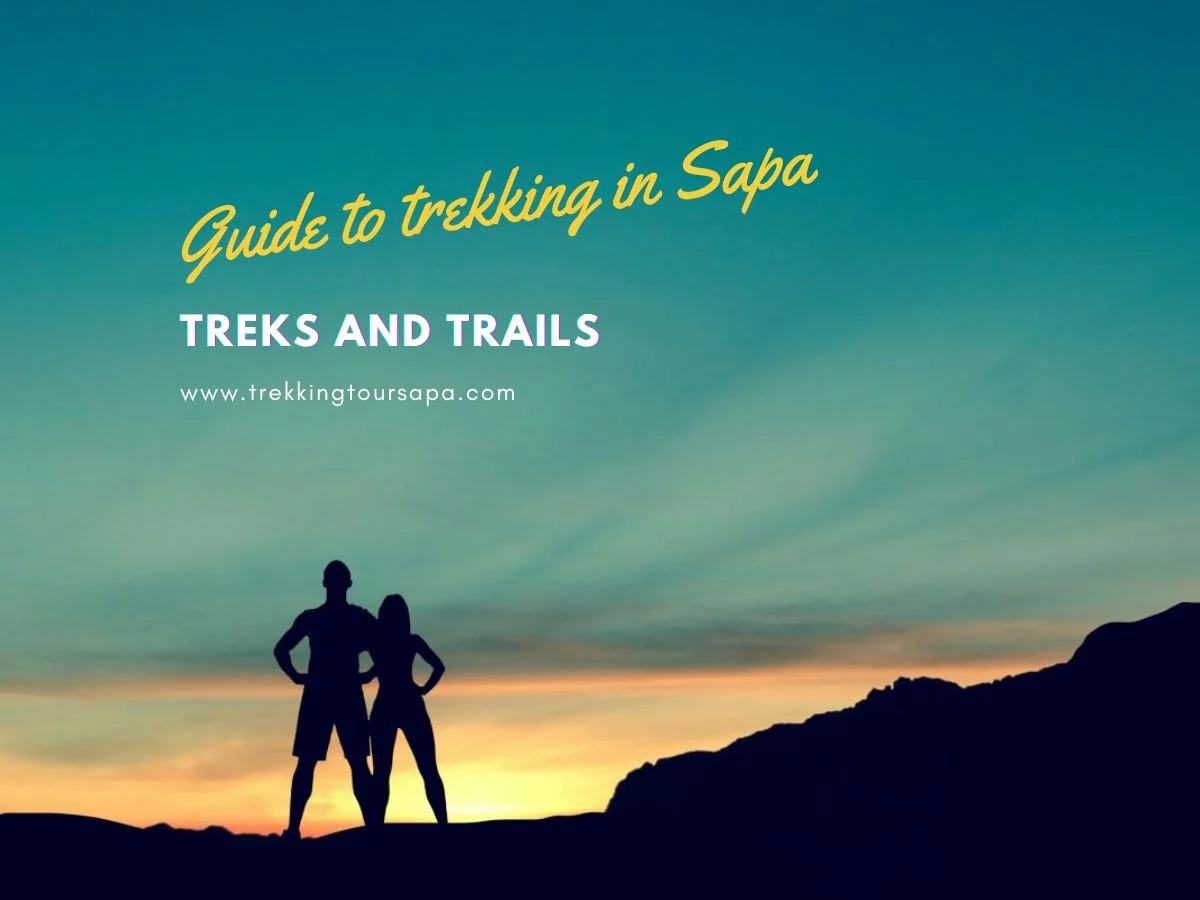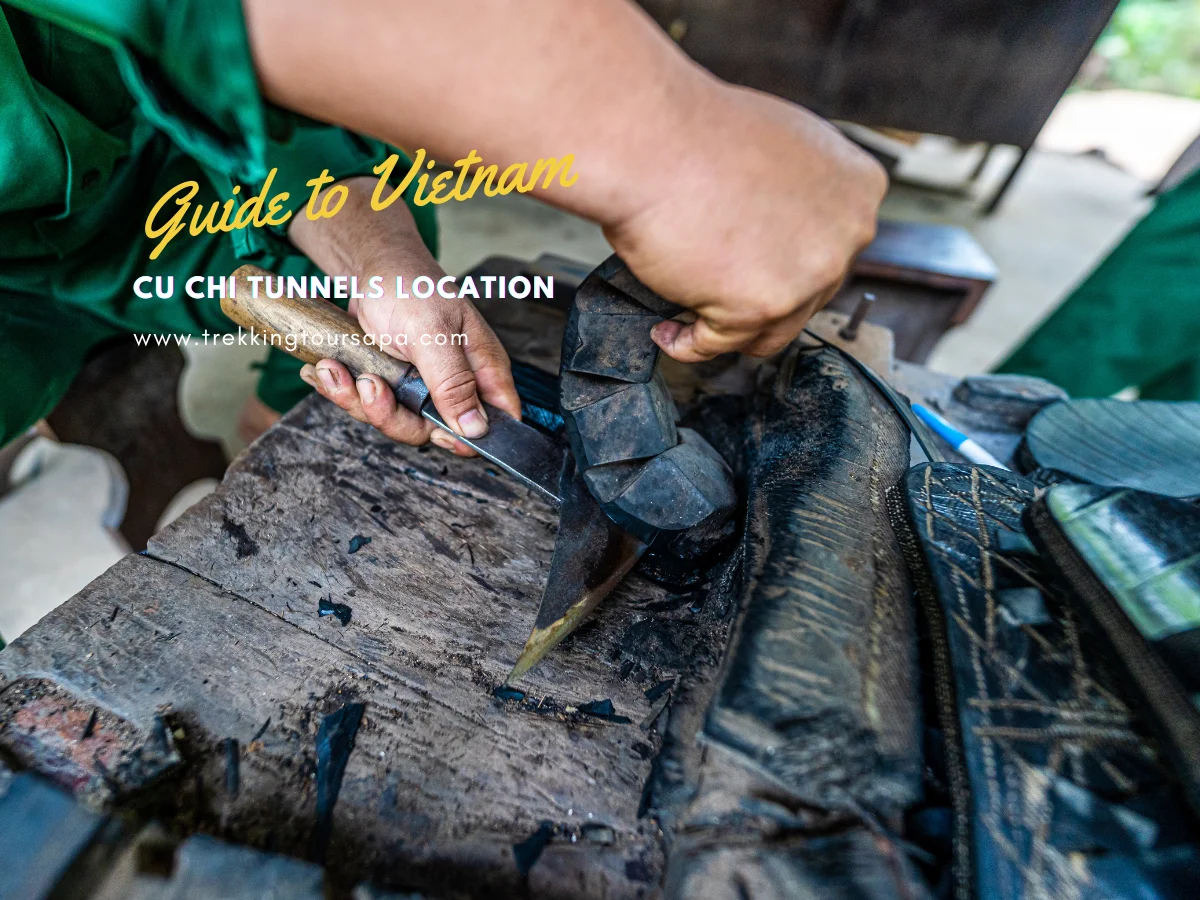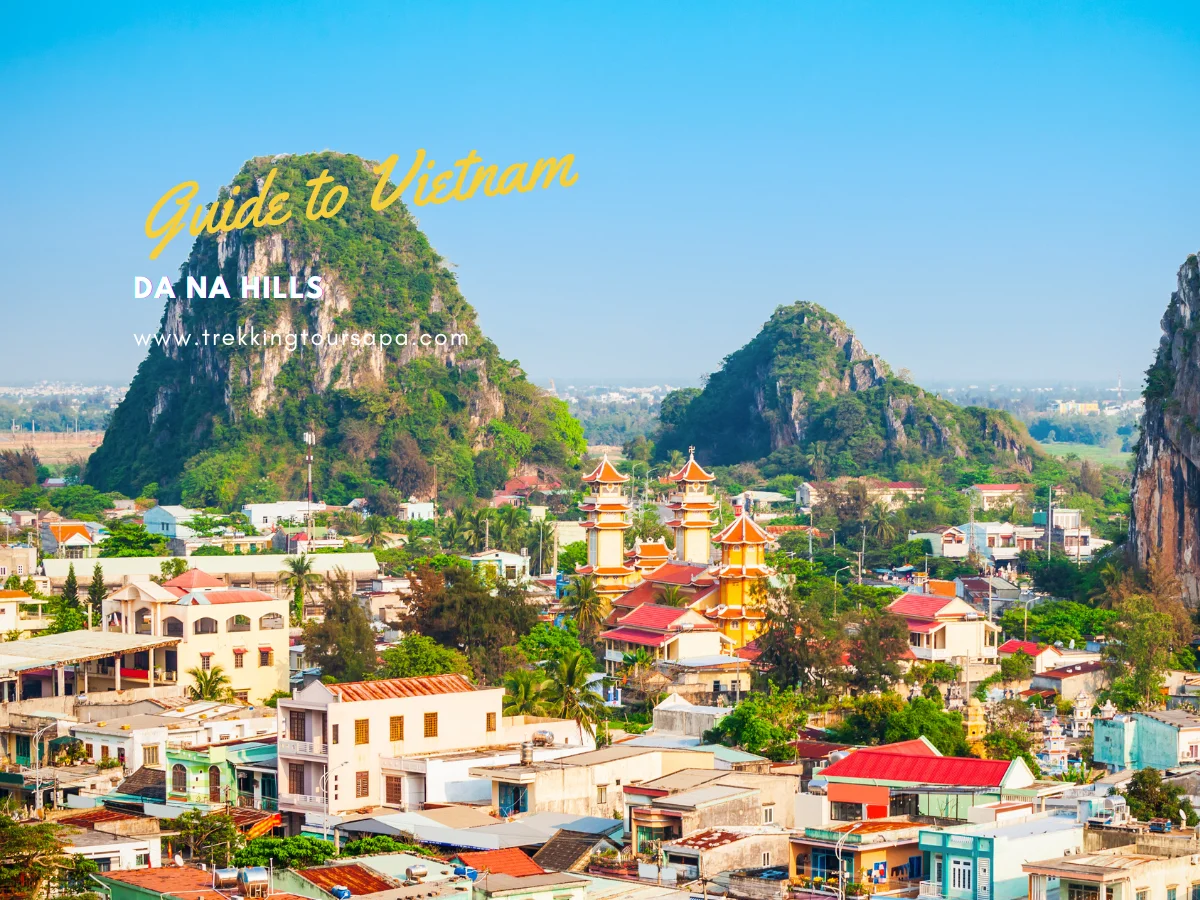Are you feeling the pull of adventure? Do you long to escape the hustle and bustle of city life and immerse yourself in nature? Treks and trails are a perfect way to satisfy that yearning for freedom while exploring some of the most breathtaking landscapes on earth. Whether you’re an experienced hiker or just starting, a trek or trail is waiting for you. From steep mountain climbs to gentle forest walks, treks, and trails offer something for everyone.
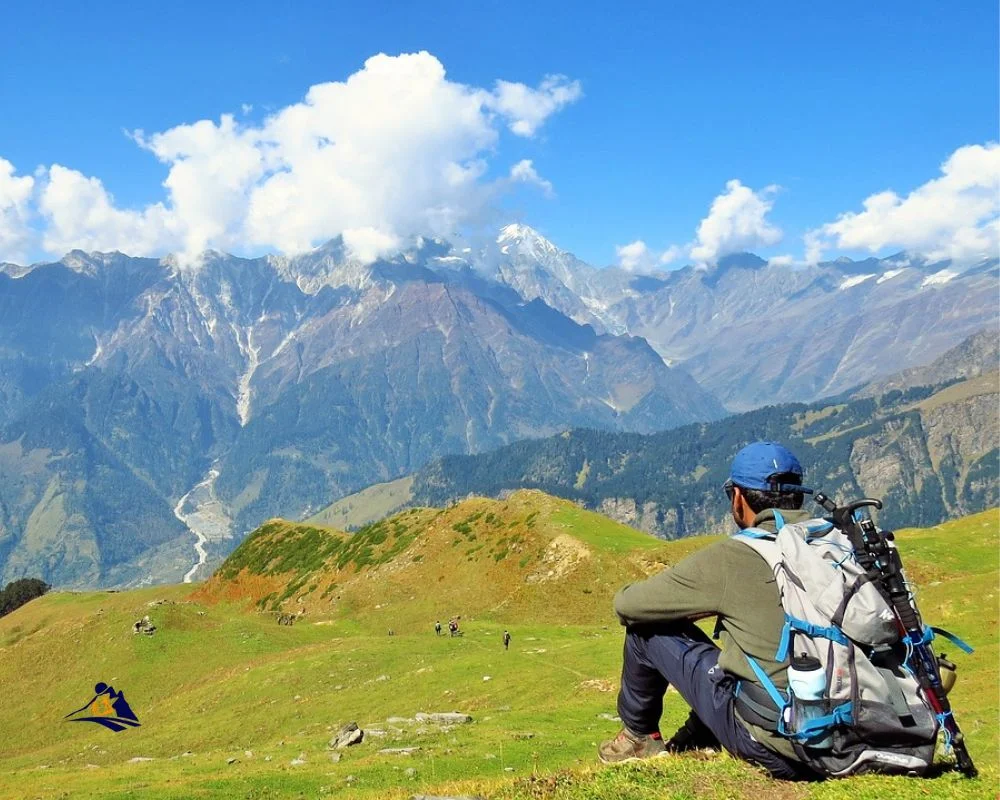
The best part? You don’t need any special equipment or training – just a pair of sturdy shoes, plenty of water, and a sense of adventure!
So why not step off the beaten path and discover what lies beyond?
Table of Contents
TogglePlanning Your Trek Or Trail
Are you feeling the call of adventure? Do you yearn to explore new lands and experience nature in all its glory? Then it’s time to start planning your next trek or trail.
The first step is choosing your destination, whether it be a national park with breathtaking vistas or a rugged mountain range begging to be conquered. Once you have decided on your location, it’s time to start packing essentials – but make sure not to overpack! Remember that every ounce counts when carrying everything on your back for miles at a time.
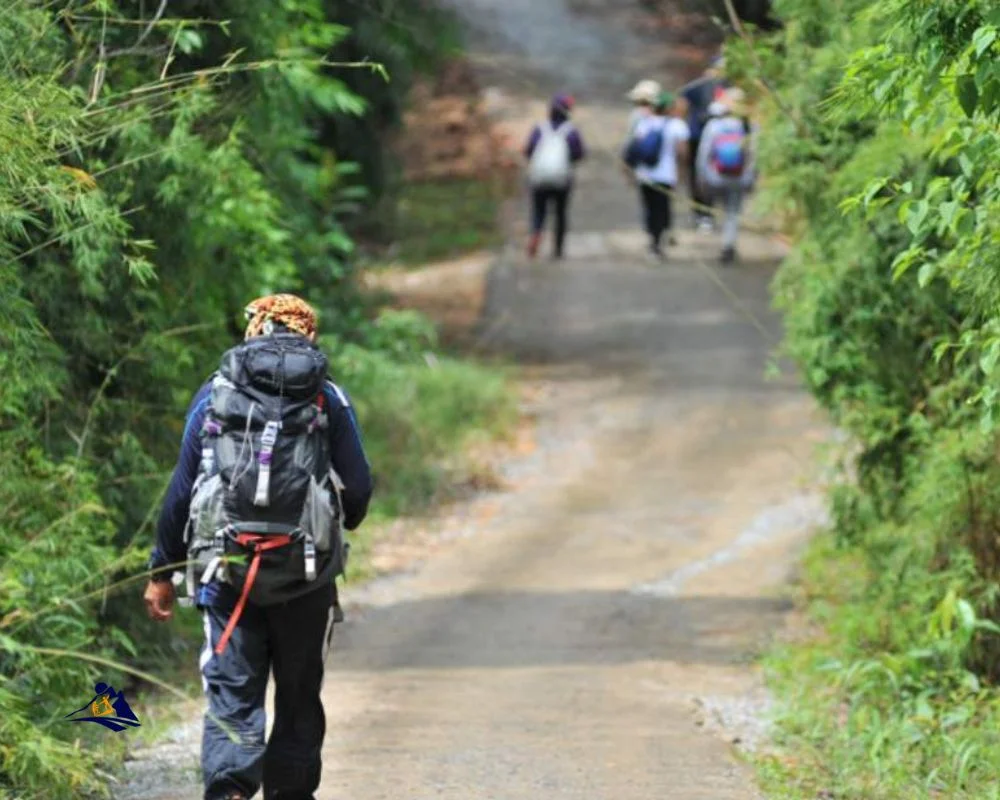
When selecting destinations, consider factors such as difficulty level and terrain. Are you an experienced hiker looking for a challenge, or are you just starting and want something more beginner-friendly? Don’t forget about weather conditions too – hiking in extreme heat or cold can add another layer of difficulty.
As for packing essentials, think about what you truly need versus what would be nice to have. Keep in mind that weight distribution is key – heavy items should go towards the bottom of your backpack while lighter ones should go higher up.
With these tips in mind, let’s move on to selecting the right gear for your upcoming adventure.
Selecting The Right Gear
When you’re planning a trek or trail adventure, having the right gear can make all the difference. Packing essentials like sturdy boots, breathable clothing, and a reliable backpack will help ensure that you’re comfortable and prepared for anything that comes your way.
But how do you know what to pack? Here are some tips to help you select the right gear:
- Research your destination: Find out what kind of weather conditions and terrain to expect so that you can choose appropriate gear.
- Invest in quality items: Spending more money upfront on high-quality gear will save you from having to replace it frequently.
- Consider weight and size: You’ll be carrying everything on your back, so make sure each item is lightweight and compact enough to fit in your pack.
- Don’t forget about gear maintenance: Keep your equipment clean and well-maintained so that it lasts longer and performs better.
- Test out new gear before your trip: Make sure everything fits properly and works as expected before hitting the trail.
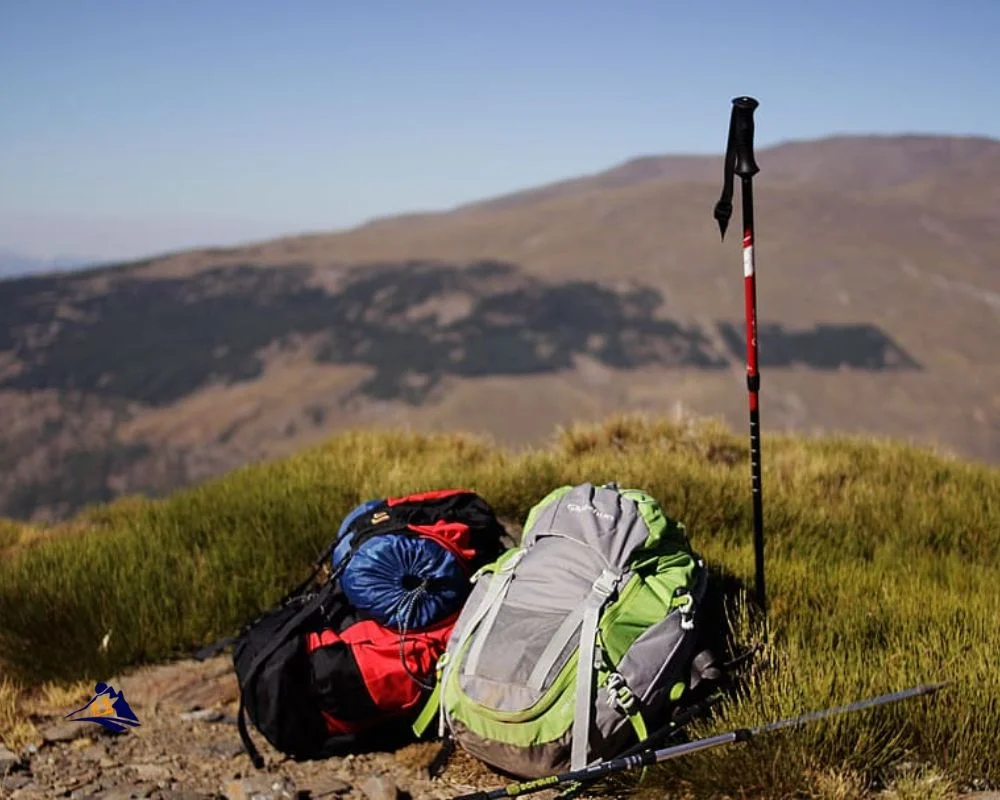
By taking the time to select the right gear and maintain it properly, you’ll be setting yourself up for success on any trek or trail adventure.
But even with the best preparation, accidents can happen. To stay safe and healthy while exploring nature’s beauty, there are some important steps you should take.
Staying Safe And Healthy
It’s essential to plan before any trek or trail, from mapping out the route to ensuring you have the right hydration and gear. Staying hydrated is key to staying safe and healthy, so make sure to bring plenty of water, as well as snacks to keep your energy up. Don’t forget to dress appropriately for the terrain and climate too – having the right clothing and gear can make all the difference.
Planning Ahead
Imagine yourself standing at the base of a mountain, ready to embark on an adventure. As you prepare for your trek, it’s important to plan to stay safe and healthy along the way. Pacing yourself is crucial when taking on any trail – don’t push too hard or too fast, as this can lead to dehydration and injury.
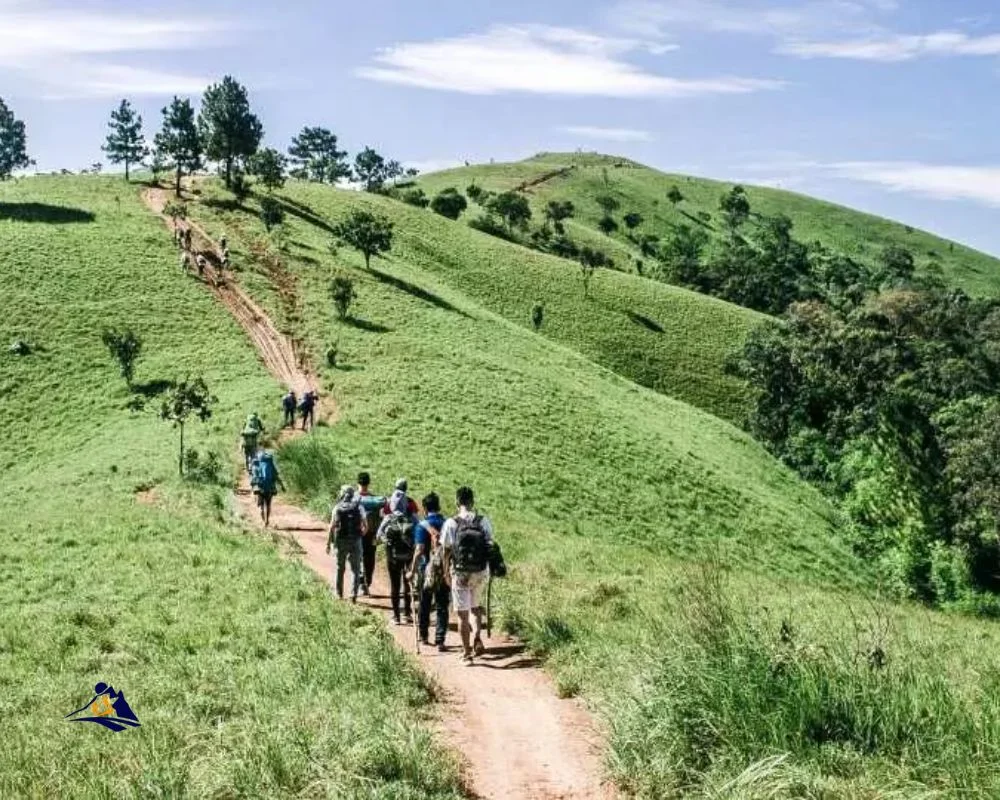
Additionally, packing light will make the journey easier on your body and help prevent unnecessary strain. By planning and keeping these tips in mind, you’ll be able to fully enjoy the beauty of nature while staying safe and healthy during your trekking experience.
Hydration
Now that we’ve discussed the importance of pacing and packing, let’s turn our attention to another crucial aspect of staying safe and healthy on a trek: hydration. Staying hydrated is essential for maintaining energy levels, regulating body temperature, and preventing dehydration.
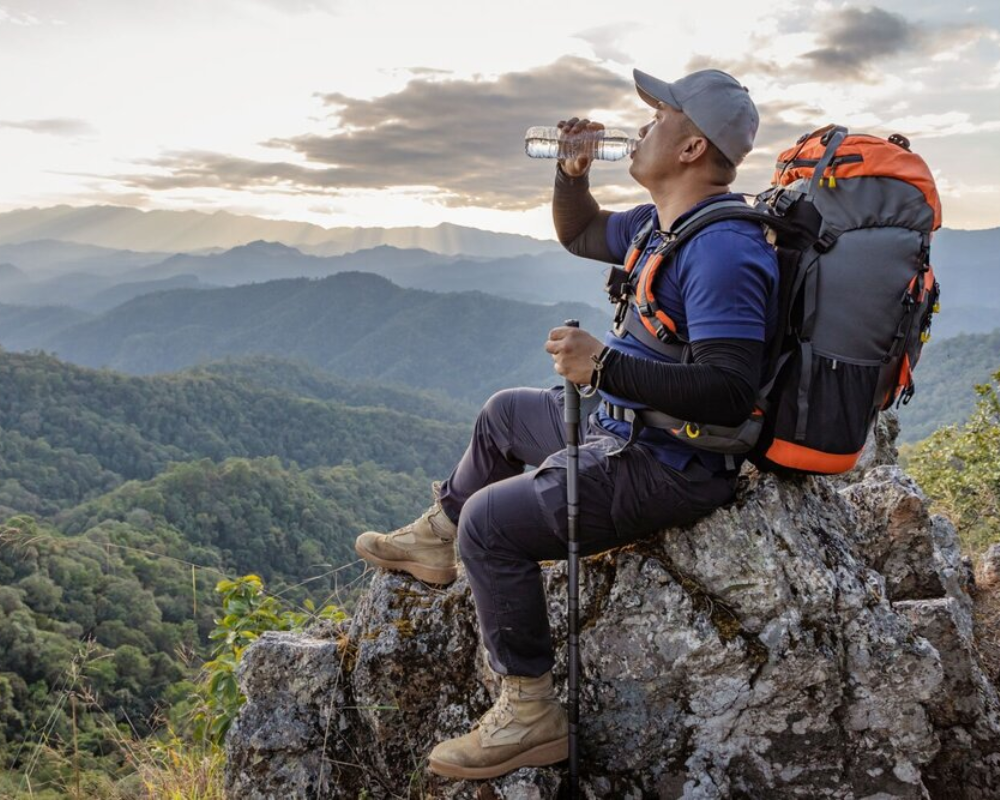
As you embark on your adventure, be sure to pack plenty of water or plan by researching water sources along your trail. Don’t wait until you’re thirsty to start drinking – it’s important to sip regularly throughout the day to stay properly hydrated.
With these tips in mind, you’ll be able to tackle any trail with confidence knowing that you’re taking care of your body every step of the way.
Clothing & Gear
Now that we’ve covered the importance of hydration while trekking, let’s shift our focus to another crucial aspect of staying safe and healthy on a trail: clothing and gear. Buying essentials such as proper footwear, moisture-wicking clothing, and sturdy backpacks can make all the difference in ensuring a comfortable and successful trek.

When it comes to packing tips, be sure to layer your clothing for varying weather conditions and pack extra socks to keep your feet dry. Investing in quality gear may seem like an added expense but is ultimately worth it when it comes to preventing blisters, injuries, or discomfort during long hikes.
By taking the time to prioritize clothing and gear, you’ll be able to fully enjoy the freedom that comes with exploring nature without any unnecessary distractions or setbacks.
Navigating Difficult Terrain
When trekking through tough terrain, it’s essential to be equipped with the right skills and tools. Reading maps is an important skill that every hiker should possess before venturing out into the wilderness. A map provides a visual representation of the area you’re exploring and can help you find your way when trails are unclear or nonexistent. By learning how to read a map, you’ll also gain a better understanding of elevation changes and topography, which will enable you to plan your route more efficiently.
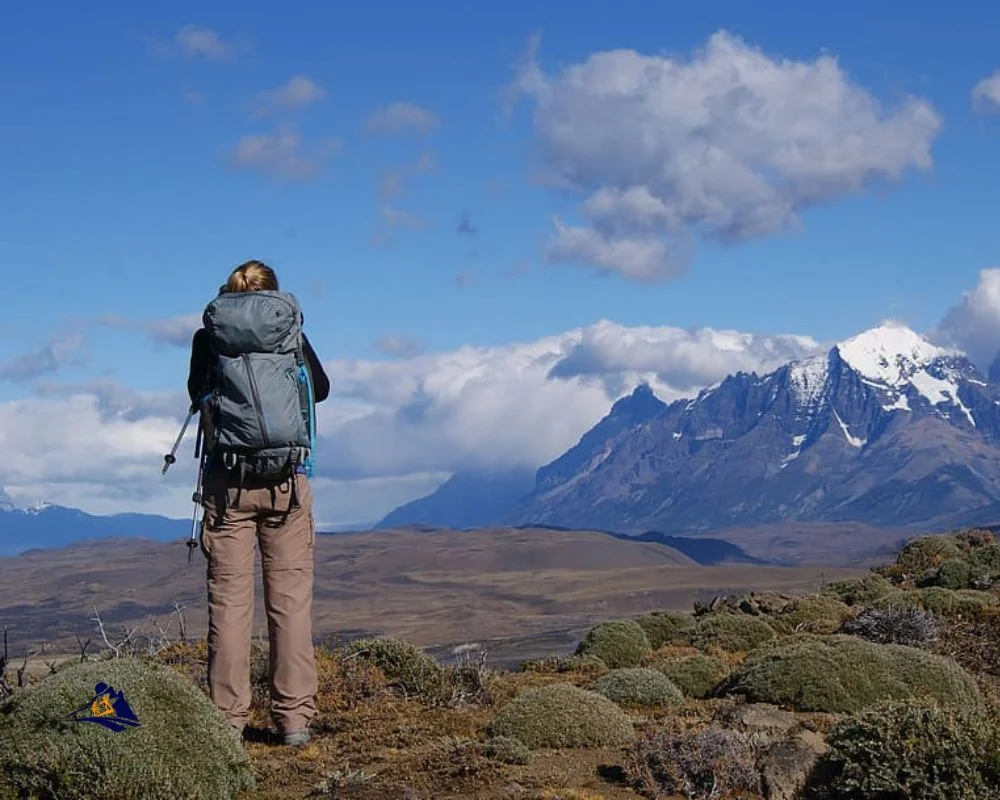
In addition to reading maps, knowing basic survival skills is crucial for any adventurer looking to tackle challenging terrain. These skills include starting fires, building shelters, finding water sources, and identifying edible plants in case of emergencies. While they may seem like simple tasks on paper, putting them into practice in real-life scenarios can be incredibly difficult if you don’t have prior experience.
Taking courses or classes that teach these skills can provide valuable knowledge that could potentially save your life one day.
Finding The Perfect Route
Did you know that there are over 200,000 miles of marked hiking trails in the United States alone? With so many options to choose from, finding the perfect route for your next trek can be overwhelming. Fear not – with a little research and preparation, you can find the trail that’s just right for you.
First things first: reading maps is crucial when it comes to planning your route. Look up topographic maps of the area you plan to hike and study them carefully. Pay attention to terrain features such as elevation changes and water sources.
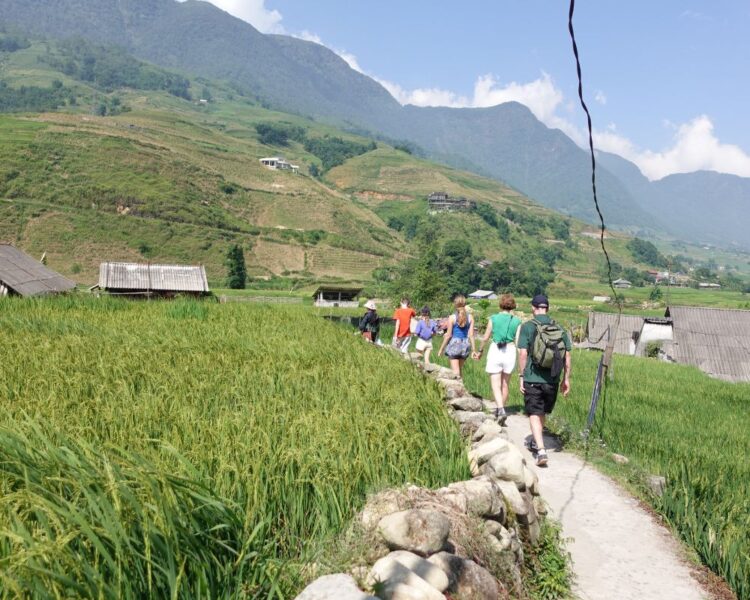
Additionally, don’t forget about weather watching! Check local forecasts leading up to your trip and pack accordingly. Here are some other tips to help guide you toward finding your ideal trail:
- Determine the length of time you want to spend on the trail
- Consider your fitness level and experience
- Decide what type of scenery or environment you want to explore
- Research any permits or regulations required for the area
By taking these factors into account, you’ll be well on your way toward finding a route that will fulfill all of your trekking desires while keeping you safe and satisfied along the way.
Now that we’ve covered how to find the perfect route, let’s talk about enjoying nature’s beauty once you’re out there on the trail.
Enjoying Nature’s Beauty
Hiking and camping are two of the best ways to experience the beauty of nature – from lush forests to breathtaking mountain views. With the right preparation and gear, these activities can be fun and rewarding for adventurers of all skill levels!
Hiking
As you hike through the lush forest trail, a cool breeze brushes against your skin and rustles the leaves above. You feel alive and free as if nothing in the world could hold you back. Hiking is not just about getting exercise – it’s about experiencing nature at its finest. Tracking wildlife and preserving nature are key aspects of hiking, allowing us to connect with the natural world on a deeper level.
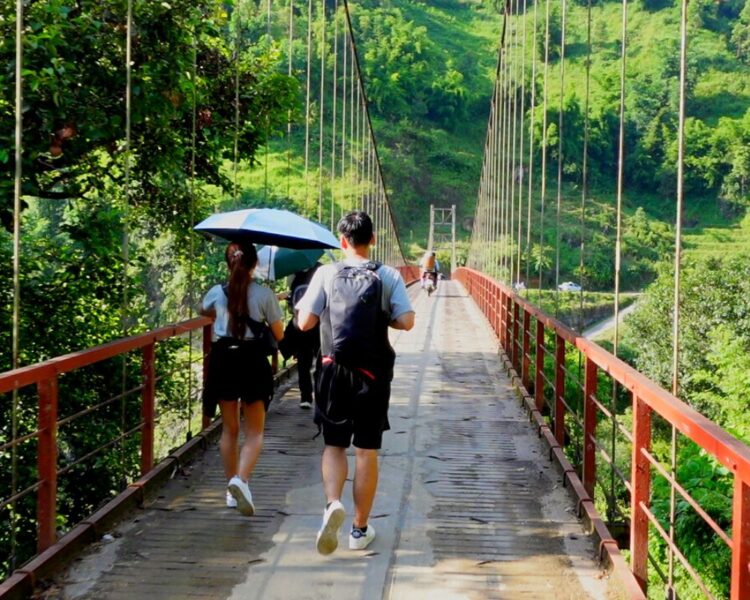
As you explore new trails and immerse yourself in different environments, take care to leave no trace behind so that future generations can also enjoy these treasures. Remember to savor every moment of your trek, for there is always something new to discover along the way.
Camping
Now, imagine ending your day of hiking with a cozy campsite and the promise of stargazing under an open sky. Camping is another way to fully immerse oneself in nature’s beauty while enjoying the freedom that comes with being outdoors. It allows for even more opportunities to spot wildlife up close and personal, whether it be watching deer graze at dawn or listening to the hooting of owls at night.
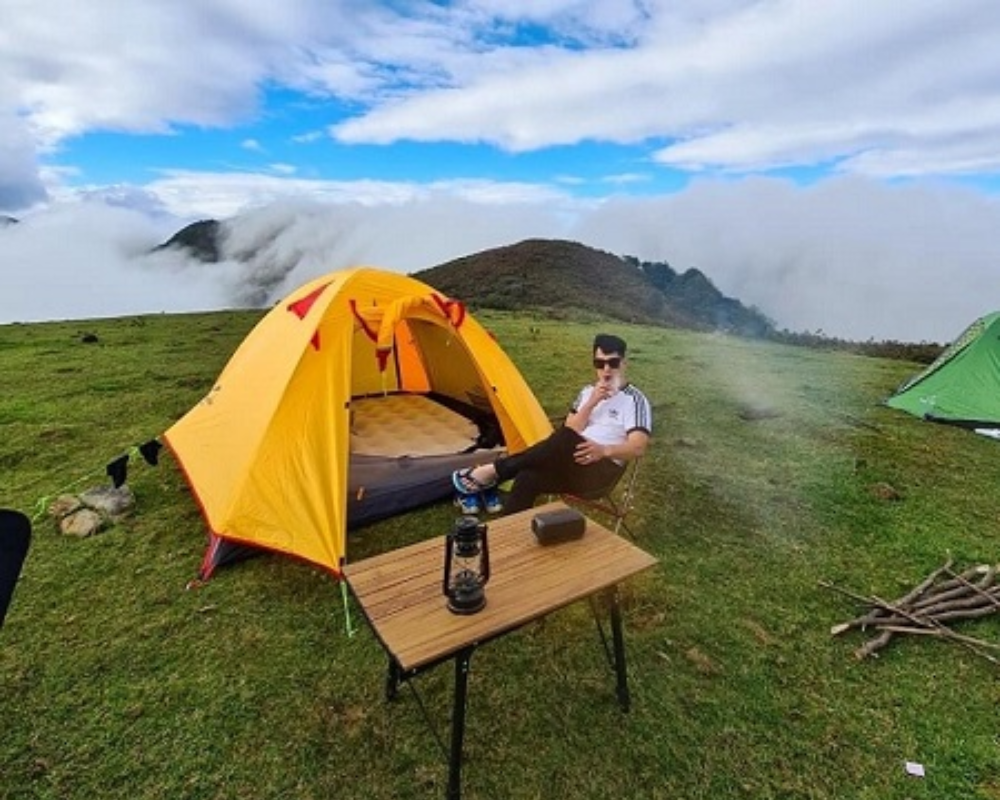
Set up camp, roast some marshmallows over a fire, and take in all that nature has to offer. The possibilities are endless when it comes to camping adventures in the great outdoors.
Taking Time To Relax And Recharge
As we trek through the beautiful landscapes and embrace nature’s wonders, it is essential to recognize that taking time to relax and recharge is just as crucial for our mental health. While being in nature can be therapeutic, incorporating recharging techniques into your routine can make a significant difference in how you experience the trail.
Whether it’s meditation, yoga, or simply sitting still and breathing deeply, implementing these practices while on a hike can help you become more present and mindful of your surroundings. By taking the time to slow down and focus on yourself, you’ll not only improve your overall mood but also connect with nature on a deeper level.

Remember that hiking isn’t always about reaching the summit or completing a challenging trail; it’s about experiencing all aspects of nature fully. So take some time during your next trek to stop and breathe deeply – your mind will thank you later! Making connections with fellow hikers can be one of the most rewarding parts of any journey.
Whether it’s sharing stories around a campfire or bonding over breathtaking views, creating friendships while out on the trail allows us to form meaningful relationships outside of our daily lives. Not only does this provide an opportunity for social interaction, but it also helps reduce stress levels by surrounding ourselves with positive energy.
So don’t be afraid to strike up a conversation with someone new – who knows where that connection might lead?
Making Connections With Fellow Hikers
Networking with fellow hikers is a great way to share experiences and make new connections! By connecting, we can learn from each other’s successes and failures as we explore the great outdoors.
Networking
When it comes to trekking and hiking, making connections with fellow hikers can greatly enhance your experience. Joining groups or clubs is a great way to network and meet like-minded individuals who share the same interest in exploring nature as you do. As you hike together, sharing experiences of past treks and trails, you’ll find yourself building lasting friendships that extend far beyond just the outdoors.
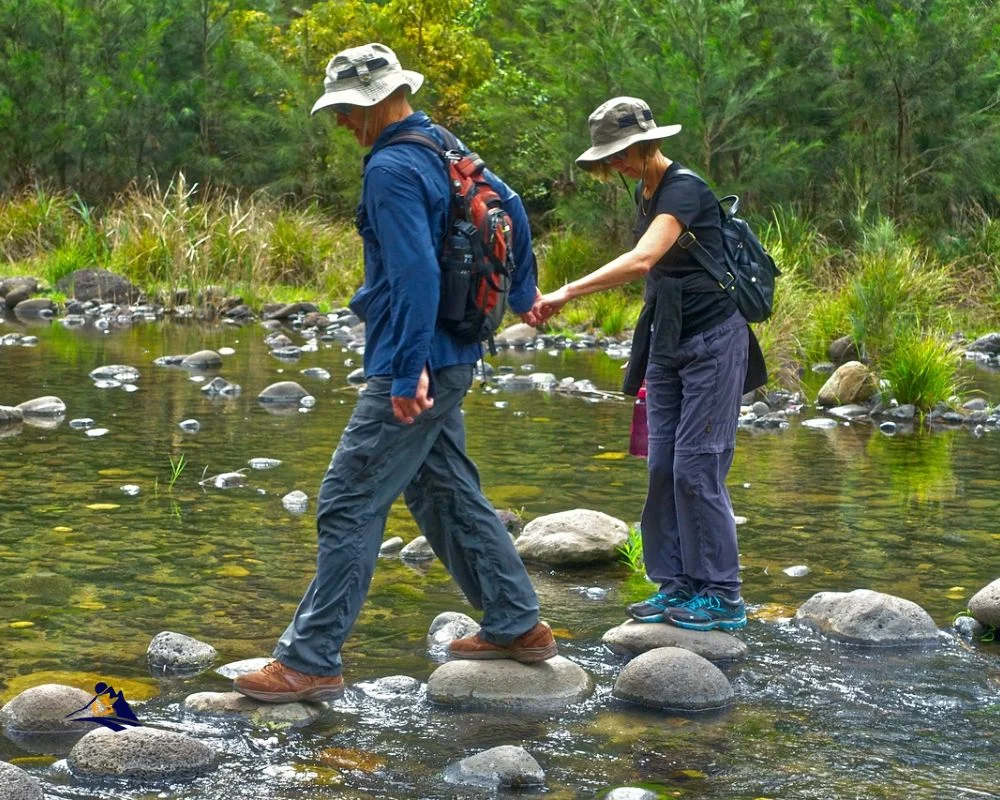
By networking with other hikers, you also have access to valuable information on new trails and destinations that will keep your passion for exploration alive. So go ahead, take the first step towards expanding your horizons by joining a group and start connecting with fellow adventurers today!
Sharing Experiences
As you trek and hike, one of the most rewarding experiences is being able to share your adventures with others. Not only does it deepen your connection with fellow hikers but it also opens up opportunities for new perspectives and insights on trails and locales you’ve visited. By packing light and immersing yourself in local cultures, you’ll find that there’s so much more to explore beyond just the physical landscapes.
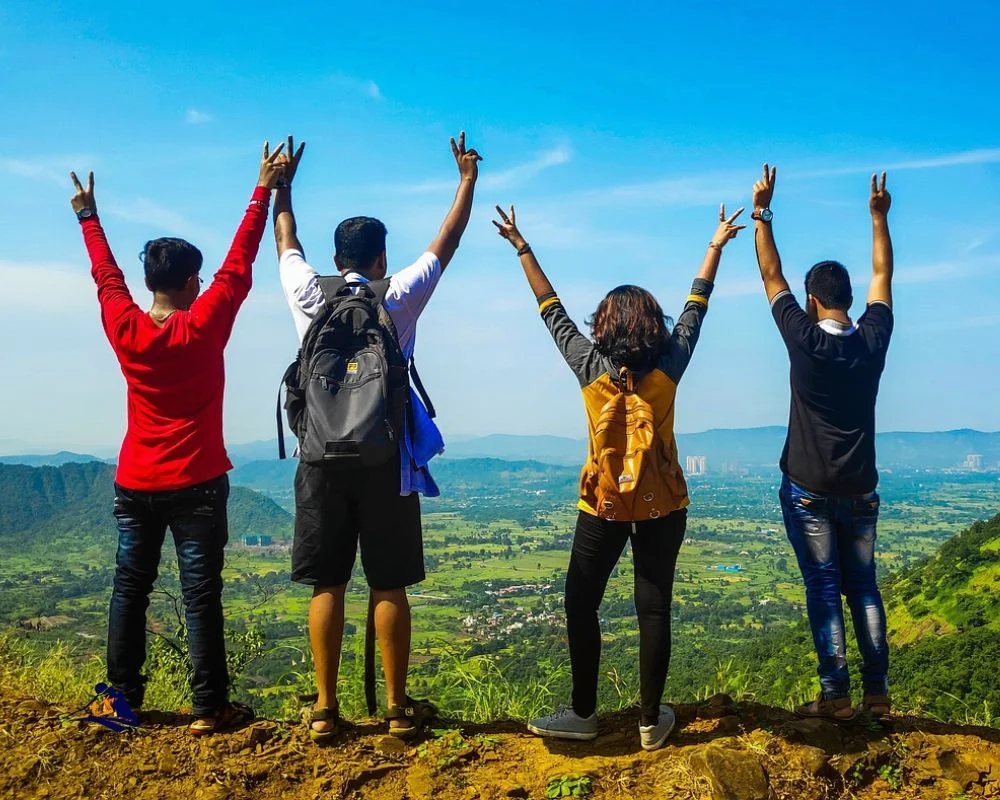
As you bond with locals and other travelers, you’ll come away from each experience feeling enriched and inspired to embark on even greater expeditions. So don’t be afraid to engage with others and share your stories – who knows where they might lead!
Exploring Off The Beaten Path
For those who crave adventure and want to explore beyond the usual trails, going off the beaten path is a great way to experience nature up close. However, it’s important to be prepared for potential hazards such as dealing with wildlife encounters. Make sure you research your destination beforehand and are aware of what kind of animals may inhabit the area. If you do come across an animal, keep your distance and avoid disturbing them. Remember that we are visitors in their homes.
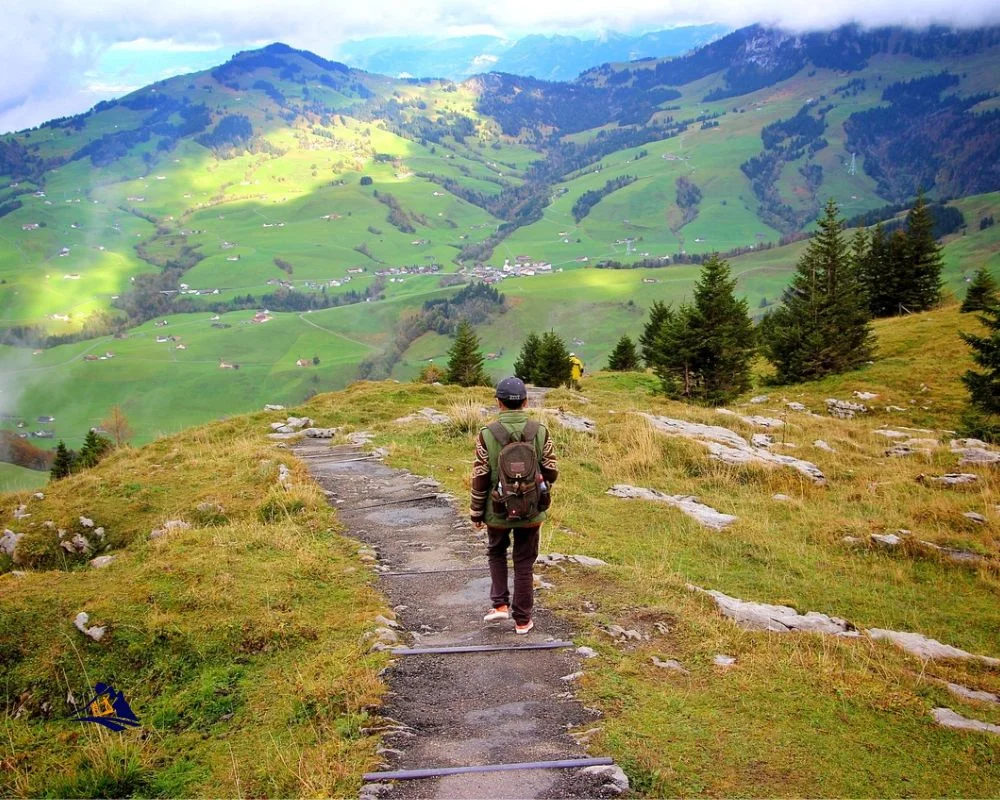
It’s also important to prioritize environmental conservation when exploring off-the-beaten paths. Leave no trace by packing out all trash and minimizing the impact on natural habitats. Consider taking part in local conservation efforts or donating to organizations that work towards preserving our beautiful planet.
By being responsible travelers, we can help protect these wild places for future generations to enjoy.
Taking Home Lasting Memories
After exploring off the beaten path, you must be feeling exhilarated and fulfilled. You might even say that it was an experience of a lifetime! But don’t let it end there – keep that sense of adventure alive by taking home lasting memories. Reflection time is important after any journey, especially after trekking through rugged terrain. Take some time to absorb your surroundings and contemplate how far you’ve come both physically and mentally.
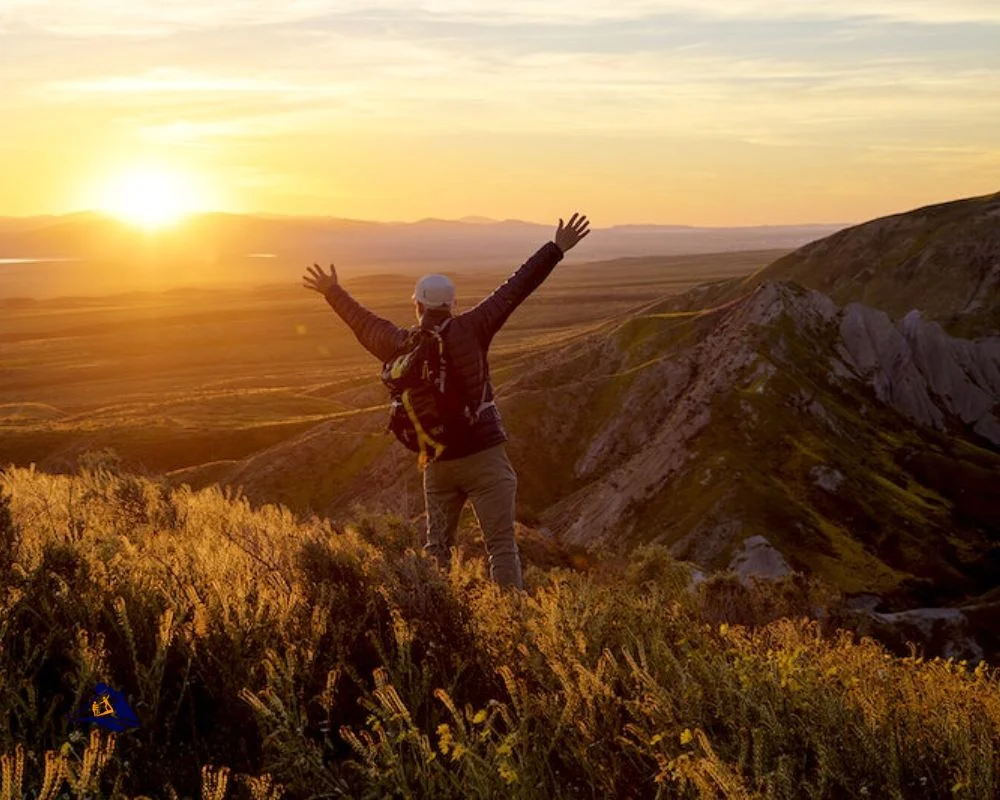
Solo trekking can also provide the perfect opportunity for introspection and personal growth. As you reflect on your journey, jot down notes or sketches to help preserve those memories forever. To truly make this experience unforgettable, consider bringing back unique items as souvenirs. Here are three ideas to get you started:
- Locally handcrafted goods like jewelry or pottery
- Pressed flowers or leaves from the trail
- A journal filled with daily reflections and stories from your trek
Remember, these mementos will serve as reminders of your incredible journey long after you return home. So take advantage of every moment and create lasting memories that will stay with you forever.
Treks And Trails Frequently Asked Questions
What Are Some Common Misconceptions About Trekking And Trail Hiking?
When it comes to trekking and trail hiking, there are a few common misconceptions that can deter people from hitting the trails.
Firstly, some believe that gear selection is the most important factor in a successful hike. While having appropriate gear is certainly helpful, it’s not necessarily essential for every level of hiking or camping trip.
Additionally, many hikers think they need to be fully prepared for any type of weather conditions before embarking on their journey. However, with proper planning and research about the location you’ll be visiting, you can often accurately predict what kind of weather you might encounter and pack accordingly.
Overall, don’t let these misconceptions hold you back from experiencing the freedom and adventure that comes with exploring nature through trekking and trail hiking.
How Can I Mentally Prepare For A Long Trek Or Hike?
Preparing for a long trek or hike requires more than just physical fitness and gear selection. It’s also about mental preparation, which is often overlooked by many hikers.
Think of it like climbing a mountain; you need to be mentally ready to face the challenges ahead. Symbolically speaking, your mind is like a compass that guides you through rough terrains and steep slopes.
To prepare yourself mentally, start with setting achievable goals and visualizing the result. This will help keep you motivated during the journey. Additionally, practice mindfulness techniques such as deep breathing and meditation to calm your nerves before starting the trek.
Remember, preparing physically is only half the battle won- your mental readiness can make all the difference in ensuring an enjoyable experience on treks and trails!
Are There Any Cultural Customs Or Etiquette Rules I Should Be Aware Of Before Embarking On A Trek Or Trail?
Before embarking on any trek or trail, it is important to understand the cultural customs and etiquette rules of the area you will be visiting.
This includes appropriate clothing for both men and women, as well as pack preparation guidelines.
In some cultures, dressing modestly may be required out of respect for local traditions. It’s also important to research if certain items should not be brought along on the hike or placed in your backpack.
By being aware of these cultural norms beforehand, you can show respect for the people and places you visit while enjoying a fulfilling trekking experience.
What Are Some Ways To Minimize My Impact On The Environment While On A Trek Or Trail?
Reducing waste and leaving no trace are essential practices for any outdoor enthusiast. When exploring nature’s beauty, it’s important to minimize our impact on the environment. By following these principles, we can help preserve the natural wonders for future generations.
There are simple ways to reduce your environmental footprint while trekking or hiking, such as bringing reusable water bottles and containers instead of disposable ones. Additionally, packing out all trash and litter is crucial in maintaining a clean and healthy ecosystem.
As a responsible adventurer, always remember to leave only footprints behind!
Can You Recommend Any Resources Or Organizations For Finding Volunteer Opportunities Related To Trekking And Trail Maintenance?
Looking for ways to give back while enjoying the great outdoors? There are plenty of resources and organizations that offer volunteer opportunities related to trekking and trail maintenance.
These experiences not only allow you to make a positive impact on the environment but also provide valuable lessons in outdoor safety and trail access. Whether you’re interested in preserving natural landscapes or helping maintain popular hiking routes, there’s no shortage of options available.
So why not combine your love of adventure with a desire to do good? Check out some of these recommended resources and start planning your next volunteering adventure today!
Conclusion
In conclusion, it’s important to remember that trekking and trail hiking can be challenging but rewarding experiences. One common misconception is that you need to be in peak physical shape to embark on a long hike or trek, but with proper preparation and pacing yourself, anyone can enjoy the great outdoors. Mental preparation is just as important as physical training – setting realistic goals and visualizing success can help you overcome any obstacles along the way.
It’s also crucial to respect local customs and etiquette while trekking or hiking in different regions. Take time to learn about the culture of the area you’ll be exploring so you don’t inadvertently offend locals or damage sacred sites. Additionally, minimizing your environmental impact by following Leave No Trace principles will ensure that future generations can enjoy these beautiful natural areas.
If you’re interested in giving back to trail communities around the world, there are many organizations dedicated to volunteer opportunities related to trail maintenance and conservation efforts. The Appalachian Trail Conservancy and Pacific Crest Trail Association are two non-profits in America alone that offer various programs for hikers looking to give back. By getting involved with these groups, we can all take part in preserving our planet’s natural beauty for years to come.
In short, whether embarking on a solo trek through rugged terrain or joining an organized group hike along familiar paths, being mindful of cultural traditions, respecting nature’s fragility, and preparing oneself mentally & physically ensures not only safety but also helps maintain ecological balance whilst leaving behind minimal carbon footprints; making every step taken matter towards creating a better tomorrow filled with adventure!
